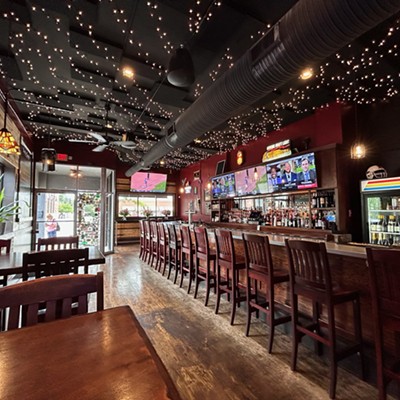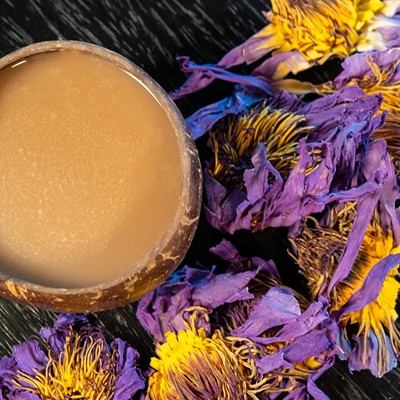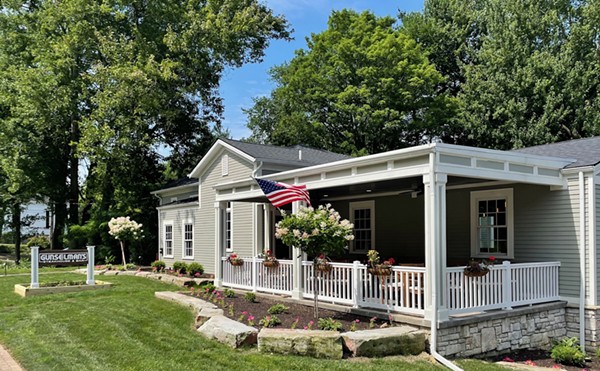Jason Kallicragas loves his job. What's not to like? He has a 2-mile commute. He spends his workdays behind the bar or brewing up concoctions in the back room of BottleHouse Brewery.And his boss lets him try new things. Well, new old things: About a year ago, he started experimenting with honey wine, better known as mead.
Mead is an alcoholic beverage made from water, honey and yeast. It's a potion that predates beer entirely and is a classification of beverage unique unto itself: not beer, not wine nor liquor, but mead.
To be clear, BottleHouse (2050 Lee Rd., Cleveland Heights, bottlehousebrewingcompany.com) has always sold mead, in addition to its more widely known beers and cocktails. Kallicragas got the idea to start making mead from one of his regulars, who'd tried a handful of the 20 or so "guest meads" the bar offers and asked Kallicragas if the brewery had plans to make its own. Given how much of it they sold, it only made sense.
The part-time bartender took the idea to co-owner Brian Benchek, who gave his eager employee the go-ahead to experiment. Now Kallicragas is assistant brewer and taproom manager, and he's helped shape the direction of the business.
"On tap, we have seven meads and seven beers," he says. "It has equal footing."
Recently, the neighborhood craft brewery acquired a winery license, which enables it to sell meads that exceed the alcoholic content regulations of its brewery license. Depending on the style, mead can range anywhere from 5- to 30-percent alcohol. In comparison, Ohio limits beers to 12 percent and wines to 21 percent.
Taste also runs the gamut with this drink. "Some are crazy sweet, some are really dry, some are full of fruit, some are really blank canvases," says Kallicragas.
Though it's an ancient beverage, mead is experiencing a resurgence, with more and more craft meaderies and wineries starting to produce honey wines. Ferndale, Mich., seems to be at the trend's epicenter. It is home to perhaps the largest U.S. meadery, B. Nektar, and Schramm's Mead, whose owner helped found the Mazer Cup, the world's biggest mead festival.
"I think it's definitely going through a comeback and a revitalization on the tail end of the craft beer trend," Kallicragas says.
Ohio has four established meaderies: BottleHouse, Brothers Drake in Columbus, Crafted Artisan Meadery near Akron and Meniru Meadery and Brewery in Canton. And rumor has it another might soon appear in Duck Island, between Ohio City and Tremont.
But competition is good for business, according to Kallicragas. He says the brewery generally gets two kinds of mead newbies: people who don't know what it is and people who hate it, thanks to cheap, overly sweet grocery store mead. "The more people who know what mead is and have a positive experience, it's going to bring people in the door."
What's exciting about the future of mead is that so much of its past is lost. How you make it, what temperature is best for fermenting, how long to age it: All of these factors are ripe for experimentation.
"Mead is like the Wild West right now; there's no model," says Kallicragas. "Everyone's just kind of completely doing their own thing."
He holds up a tiny snifter of crystal clear, golden mead and takes a deep whiff. This is his newest creation, a pineapple, mint and jalapeno mead called Verditas. It's a riff on one of BottleHouse's cocktail specials, and it's lightly sweet, subtly minty with a mild warming sensation at the finish. He's teamed up with Cleveland Tea Revival for a lapsang souchong mead and will release a local strawberry mead next summer.
BottleHouse is also trying new and simultaneously very traditional styles such as the wine-like pyment, which replaces the water during fermentation with grape juice, and braggot, an ale-mead hybrid. As both a brewery and a winery, BottleHouse is in a unique position to make braggot, and it's got Kallicragas pumped.
This is what makes BottleHouse's varieties special and why they don't have a problem sharing market space with places like Crafted and Brothers Drake, both of which recently started distributing in the Cleveland area. Each meadery's offerings are totally different.
"The more people doing this kind of stuff the better; there's room for everyone to grow. Every brewery can't be Sierra Nevada-size or Sam Adams, but every neighborhood can have a brewery this size."
Cheers to that.









